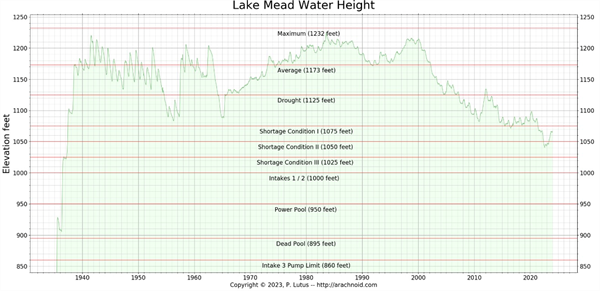-
Oct 20, 2021Rethinking Thrips Management in Fall Lettuce
Historically, management of western flower thrips in lettuce was targeted at preventing damage by thrips feeding on marketable leaves. Left unchecked, cosmetic scarring could result in downgrading of quality, or even rendering the crop unmarketable. In fall lettuce, PCAs could typically allow thrips to build up on young lettuce plants and later prevent feeding damage on marketable leaves with 1-2 well timed foliar insecticide applications. However, that all changed last spring with the discovery of Impatiens Necrotic Spot Virus (INSV) in late spring crops.
To manage thrips with the intent of suppressing or prevent INSV infection it’s important to understand how western flower thrips acquire and transmit the virus. Based on the experiences in Salinas the past 2 seasons, we’ve learned that INSV infections occur two ways. First, Primary infection or spread occurred where INSV infected adults from an outside host source migrate into lettuce, feed, and transmit INSV to otherwise healthy plants. In theory, the more infected thrips moving into the field, the higher the incidence of primary infection. An adult thrips can only transmit the virus; it cannot acquire the virus from an infected plant. Secondary infection or spread occurs when thrips larvae acquire INSV by feeding on an infected plant (either lettuce or nearby weeds), complete development and emerge as infected adults, capable of transmitting INSV throughout the field or nearby lettuce fields/weeds. Keep in mind, adults only transmit INSV, whereas only larvae acquire the virus from an infected plant.
This has led us to many questions about the virus and its epidemiology in desert cropping systems relative to last year. First, why did it suddenly appear last March when it had not previously been reported in our cropping system. In 31 years as a vegetable entomologist in Yuma, I have never seen INSV or TSWV (a related tospovirus) in desert lettuce. Anecdotally, it has been presumed that INSV arrived in the desert on infected lettuce transplants or infected adults hitching a ride to Yuma on transplants or equipment originating in Salinas. Not knowing the exact sources of INSV last season, the question is: will the virus reappear again this season? Given that Salinas has battled INSV all summer and produce a fair amount of the lettuce and brassica transplants grown in Yuma, we must assume that INSV will arrive in the desert at some point. So, until we have a better understanding of INSV epidemiology on desert lettuce, it is recommended that PCA’s and growers adjust their thrips management programs this season, particularly in high-risk areas. Below are several recommendations that PCAs should consider this season.- Season-long sanitation. Maintaining a clean cropping system via cultural management is the foundation of an effective thrips/INSV control program by eliminating sources of both the virus and the vector. Local research has determined that several desert weed species serve as reservoirs for both thrips and INSV. Reduction of thrips/INSV is likely with thorough weed control, both in and around produce fields. Additionally, once lettuce harvest begins, growers should disk crop residue as quickly as possible following harvest to reduce prolonged thrips reproduction and spread.
- Scouting for thrips is important. Research has shown that visual sampling for thrips can underestimate the actual numbers on the plant due to their small size and cryptic nature. If you can see a few adults and larvae on a plant, it means that there are likely several-fold more thrips on the plant that you cannot find hiding near the base of the plant between midribs.
- Focus on minimizing Secondary spread. Because adults can be difficult to control, prevent larvae from completing development to the adult stage and moving throughout the field. It’s hard to prevent primary infection from the outside but minimizing larvae populations should help suppress the secondary spread of INSV if it is present in the field. In other words, “Nip the thrips” populations in the bud.
- Early and aggressive spray timing in high-risk areas. It is advisable that PCAs preventatively treat lettuce fields early and aggressively in these areas at a high risk of INSV infection:
- Lettuce and brassica transplants originating from Salinas should be treated before or shortly after transplanting.
- Direct-seeded lettuce fields grown adjacent to, or near lettuce and brassica transplanted fields originating from Salinas should be treated early and aggressively.
- Lettuce grown in areas where significant INSV was found last spring (i.e., Tacna, Roll, Wellton, Bard) should be watched closely and treated preventatively when thrips first appear.
- Using Insecticides Differently.
- Consider incorporating Lannate or Torac with chemical thinners/smart sprays.
- Consider combining Lannate or Torac with armyworm, looper and whitefly sprays early when thrips pressure is light.
- Consider tightening spray intervals (6-7 d) with heavier thrips pressure, or the first signs of INSV in the immediate area.
- Consider rotating Minecto Pro or Exirel with Radiant for armyworm, looper and whitefly control in fall lettuce, and similarly when aphids appear later, consider rotating Beleaf and Acephate with Movento. All these products have shown to provide control or suppression of western flower thrips larvae.
5.Test symptomatic plants immediately. The earlier you discover INSV in a field the better chance you have of reducing secondary spread within the field and, perhaps as important, to surrounding lettuce in the area. The UA Diagnostic Plant Pathology Diagnostic Lab and Dr. Bindu Poudel-Ward can confidentially confirm the presence of INSV on symptomatic plants. So please don’t hesitate to have symptomatic plants tested for INSV infection.
For more information on thrips management in desert lettuce go to: Rethinking Thrips Management in Desert Lettuce
To contact John Palumbo go to: jpalumbo@ag.Arizona.edu










